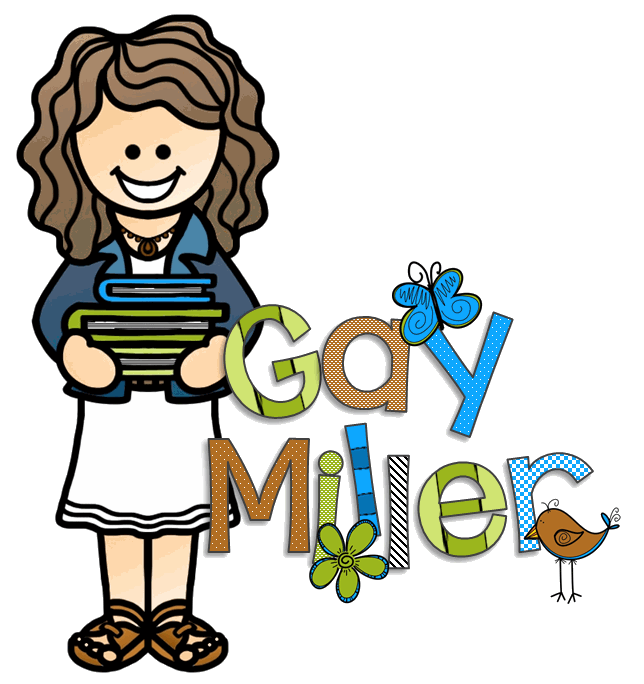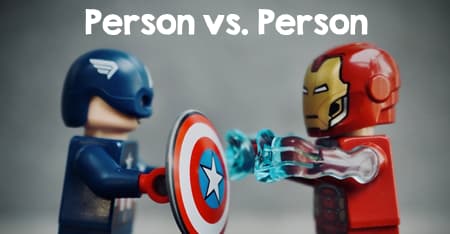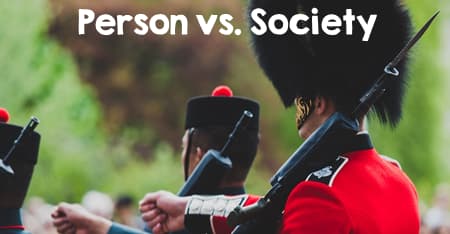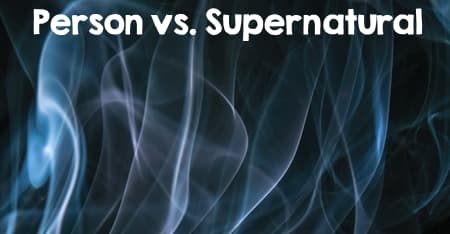
Teaching students to understand problems and solutions is a breeze with real-life examples, but spotting them in nonfictional texts is much more difficult. This post provides you with strategies, graphic organizers, and practical examples to help your students master this critical reading skill.
Grab this PDF for links to free text structure activities and printables by clicking on the button.
What is a Problem and Solution Text Structure?
Problem and Solution Anchor Chart

A problem is defined as something that needs to be solved. The solution is the means of solving a problem or dealing with a difficult situation.
Problems may be:
Between individuals
- Examples:
- a robber holding up a person
- a disagreement or fight
- bullying
- Examples:
Between groups
- Examples:
- prejudice
- rivalry
- disagreement over pay
- cultural differences
- Examples:
In the world
- Examples:
- global economic collapse
- pollution
- global warming
- war
- terrorism
- weapons of mass destruction
- overpopulation
- Examples:
Within one person
- Examples:
- a struggle between good and evil
- using logic or emotion to rule decision-making
- Examples:
Teaching Problems and Solutions with Graphic Organizers,
including a Video Lesson

Be sure to download the video lesson handout for students to complete while watching the video.
Organizer 1: Problem-Solution Chart
Definition and Use:
A problem-solution chart is a simple and effective way to help students identify the problem, the solution, and the steps taken to resolve the problem in a narrative.

Example:
- Problem: The classroom is too noisy during work time.
- Solution: Implement a noise level chart and reward system to maintain a quiet environment.
- Steps:
- Introduce the noise level chart to the class.
- Explain the reward system.
- Monitor noise levels and reward quiet behavior.
Activity:
Provide students with a short story or scenario. Ask them to identify the problem, the solution, and the steps taken to solve the problem. Have them fill out the problem-solution chart based on the given scenario.
Organizer 2: Sequence Chain
Definition and Use:
A sequence chain helps students map out the sequence of events that lead to a problem’s solution. This organizer is useful for visualizing the cause-and-effect relationship in a narrative.

Example:
Problem: The school cafeteria is too crowded.
Solution: The school decides to stagger lunch periods.
Sequence of Events:
- Problem: The cafeteria is too crowded during a single lunch period.
- Solution: The school implements staggered lunch periods to reduce crowding.
- Problem: Staggered lunch periods cause scheduling conflicts for afternoon classes.
- Solution: The school adjusts the bell schedule to accommodate staggered lunches.
- Problem: The new bell schedule reduces recess time.
- Solution: The school introduces short breaks between classes to compensate for reduced recess.
- End Result: The cafeteria is less crowded, students have a more balanced schedule, and teachers adapt to shorter class periods.
Activity: Give students a short story or scenario. Ask them to break down the sequence of events that leads to the resolution of the problem. Then, have them complete the sequence chain based on the given scenario.
Organizer 3: Problem-Solution Map
Definition and Use:
A problem-solution map is a detailed organizer that breaks down the problem into smaller parts and explores multiple solutions. It helps students think critically about various ways to address a problem.

Example:
- Problem: The local park is littered with trash.
- Possible Solutions:
- Organize a community clean-up day.
- Install more trash bins around the park.
- Launch a public awareness campaign about littering.
Activity:
Provide students with a short story or scenario. Ask them to identify the problem and brainstorm multiple solutions. Have them fill out the problem-solution map based on the given scenario.
Types of Conflict in Literature
Understanding real-life problems can provide a valuable framework for recognizing similar conflicts in literature. For instance:
- Conflicts between individuals, such as a robber holding up a person or a fight between friends, are mirrored in literary conflicts like Person vs. Person, where characters struggle against one another.
- Issues within groups, like prejudice or cultural differences, can be seen in Person vs. Society conflicts, where a character battles societal norms or rules.
- Environmental challenges like pollution and global warming relate to Person vs. Nature conflicts, while internal struggles such as deciding between logic and emotion reflect Person vs. Self conflicts.
Exploring these real-world problems helps students grasp the various literary conflicts and enhances their ability to analyze narrative structures. Dive deeper into each type of conflict by exploring the posts linked below:
Explore more about each type of conflict by clicking on the buttons
Mentor Texts to Teach Problems and Solutions
- Dog Breath by Dav Pilkey
- The Little Engine that Could by Watty Piper
- A Bad Case of Stripes by David Shannon
- Where the Wild Things Are by Maurice Sendak
- Iggy Peck Architect by Andrea Beaty
- The Boy who Harnessed the Wind by William Kamkwamba
Select one of these mentor texts for students to write a problem and solution paragraph.
How to Write a Problem and Solution Paragraph
- State the Problem: Write a sentence that states the problem. This sentence should be an attention grabber. You may start it with a statement such as . . .
- Imagine what would happen if . . .
- Imagine what would happen if . . .
- Describe the Solution: Include researched facts. You may use a question such as . . .
- Did you know that . . .
- Convince Your Reader: Write sentences that convince your reader why your solution is reasonable. You might begin with . . .
- If we . . . then . . .
- The answer to this is . . .
- Encourage Action: Convince your reader to take action. Add signal words to these sentences such as . . .
- One thing we can do is . . .
- To meet this need, we can . . .
Teaching students to identify and understand problems and solutions is essential for developing their critical thinking and analytical skills. By incorporating various graphic organizers, such as problem-solution charts, sequence chains, and problem-solution maps, you provide students with diverse and engaging tools to map out complex information visually. The video lesson also helps students grasp these concepts memorably. Using these strategies, you can enhance your students’ comprehension and prepare them for more advanced reading and writing tasks.
Additional Text Structure Blog Posts
Check out the other posts in this series by clicking on the buttons below.
Testimonials for Problem/Solution Text Structure Lessons and Activities
✅ WHAT BUYERS ARE SAYING
⭐ “What a huge packet for a low price! I love the graphic organizers that go with the task cards.” – Michelle
⭐ “This is a great product! A variety of activities to meet the needs of all students.” – Marci
⭐ “WOW! This is so awesome! So many great ways to practice finding the problem and solution!” – Hilary
⭐ “Including lots of different activities for the same topic is great because I have students that I loop with year to year and it’s important to me that, though we study the same skills, they get fresh material each year to use with their advancing reading level.” – Marie
See the product that inspired this post.
Text Structure – Problem/Solution Text Structure Lessons and Activities include lessons and activities teaching different problem/solution activities to help students fully understand this skill.












